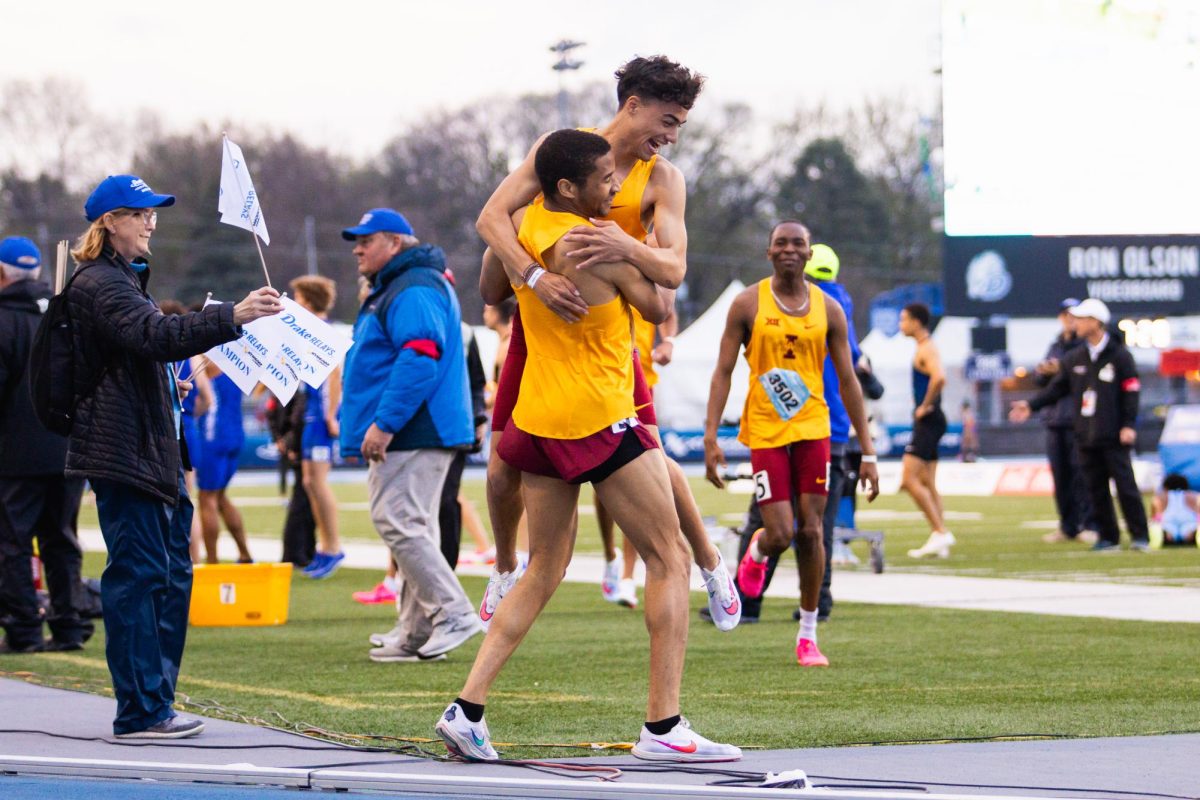Percentage of women at ISU is increasing
November 28, 2000
Female students at Iowa State have increased by 4 percent in the last 10 years, causing women to outnumber men in all but three ISU colleges.
More than 22,000 students are enrolled at Iowa State this semester, and of that number, more than 10,000 are women, according to fall 2000 undergraduate enrollment statistics from the Registrar’s Office. As undergraduates, women equal or outnumber men in all but three of ISU colleges — the Colleges of Agriculture, Business and Engineering.
The percent of women attending college has increased steadily from 25 percent almost 40 years ago to the current rate of almost 50 percent nationally, the statistics show.
Howard Shapiro, vice provost for undergraduate programs, said the percentages can be deceiving.
“The number of women has gone up more significantly than percents,” he said. “The various colleges have set goals in recruitment and are still working to retain the women they currently have.”
Shapiro said the increase is due to the university’s effort to recruit women into nontraditional career fields, such as science and engineering.
“In general becoming more student-centered and making classes more suitable to the success of all [is important in retaining women],” Shapiro said. “[This is done by having a] more active learning environment with more opportunities. Also, clubs and organizations help women deal with problems and concerns that would help contribute to a better climate.”
The overall increase in female students seems to reflect societal norms and recruitment efforts by the college, Shapiro said.
“If you go back to the ’60s, the number of women began going up,” said Jill Bystydzienski, professor of liberal arts and sciences cross disciplinary studies. “Changes in women’s roles and an expansion in higher education [contribute to the national increase], though women tended to go into traditional areas like the humanities.”
Shapiro said precollegiate awareness and talking about making good choices in science and math are some of the keys to getting and retaining female students in nontraditional fields.
“The gap in K through 12 level has really narrowed [in the science and math fields],” Bystydzienski said. “There is more awareness and encouragement for girls to go into these areas. However, there is still a gap in the science fields, and part of it is still socialization and the difference in how teachers treat boys and girls. Boys tend to do more activities outside of school like science clubs and science fairs or working on cars while girls are not as likely to do these things.”
Bystydzienski said although recruiting has been increased, retention rate is the important part.
“It can be hard for women to stay in science fields like physics and chemistry because there is a lack of role models, and the climate is not very conducive for them,” she said.
One way of recruiting women is through specialized groups like the Program for Women in Science and Engineering.
Barbara Lograsso, assistant director of the program, said the number of women in the science and technology fields has increased 67 percent over the last 14 years. Currently in these fields, female undergraduates make up 32.6 percent of the population.
Lograsso attributes the increase to a combination of factors that are used to “encourage young girls, then women, to explore science, engineering, and math careers.”
















